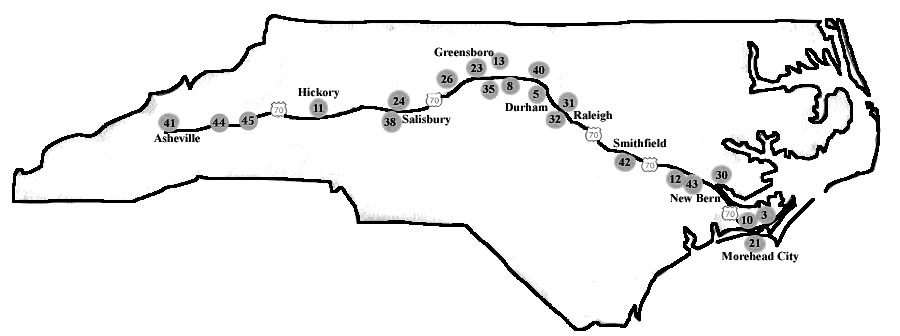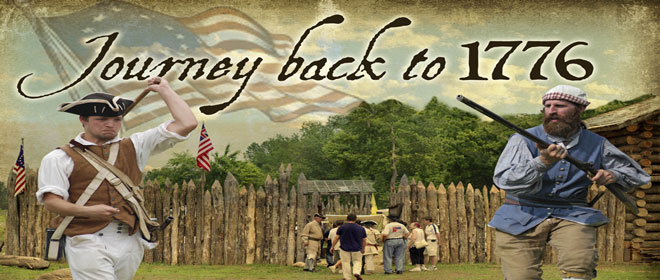
Old Fort History
A Revolutionary War History
Just over the railroad
tracks in Old Fort, N.C., is the town square defined by a 30
foot tall arrowhead hand chiseled in granite' The landmark
was unveiled to a crowd of more than 6,000 people on
July 27 1930 by Marie Nesbitt as a symbol of the peace
achieved in an earlier century between pioneers and Native
Americans. Travelers may go to this town expecting to see
remnants of an old fort. The name suggests a fort once stood
here at the base of the Blue Ridge Mountains, a place where
some of the earliest settlers and pioneers took refuge.
The first Spanish
explorer probably arrived in the 1500s, followed in the
early 1700s by pioneers who established a fort. By the mid
1700s, the settlement around the stockade had become the
westernmost outpost of Colonial civilization. George
Davidson owned old Fort Plantation the area where the fort
stood. By 1869, the railroad reached as far as the Old Fort
Plantation and a hotel and depot were built. In 1871 a
wealthy union soldier Sanborn Worthen bought the Old Fort
Plantation hoping the railroad would build the yards there
and make him rich. He named the 2200-acre plantation Catawba
Ville. But as fortune would have it the railroad yards were
built 100 miles to the east and he lost his investment. The
State General Assembly changed the town's name to Old Fort
shortly afterwards.
In 1875 work continued on the railroad to extend it to Asheville, and in March 1879 the rail entered Buncombe County through the Swannanoa Tunnel. The busy little town of Old Fort became the home of a resort hotel and a geyser, a manmade tourist attraction powered by a nearby spring. The hotel, built in 1879 a little too close to the railroad, burned in 1903. A few years later in 1911, a wealthy New Yorker rescued the geyser, he bought the land around it, moved it across the street, redesigned it and named it in honor of Col. A.B. Andrews, an engineer and the first president of the Western North Carolina Railroad. Today, the geyser is in the middle of a five-sided concrete pool and belongs to the town. The large green space around it offers shade and tables for picnicking.
HISTORY OF OLD FORT (FEEL FREE TO COPY AND CONTINUE MY WORK)
This is an excel document it makes it very easy to add and sort the information.
Civil War History

US-70 Civil War Trails
44. CARSON HOUSE, McDOWELL COUNTY
Trails sign on US 70, a half mile west of Marion town limits – An element
of Union Gen. George Stoneman's cavalry raiders skirmished briefly with
home guards here April 19, 1865; then "were swarming in and around
the house." After plundering the home and scaring the family, Stoneman
moved on toward Asheville.
45. SWANNANOA GAP, McDOWELL COUNTY
Trails sign in Andrews Geyser Park on Mill Creek Road off Old US
Highway 70, 4 miles west of the Old Fort Visitor Center and Railroad
Museum – Confederates consolidated here April 19, 1865, after Union
raiders left the Carson House and easily turned back the Northern
advance.



















